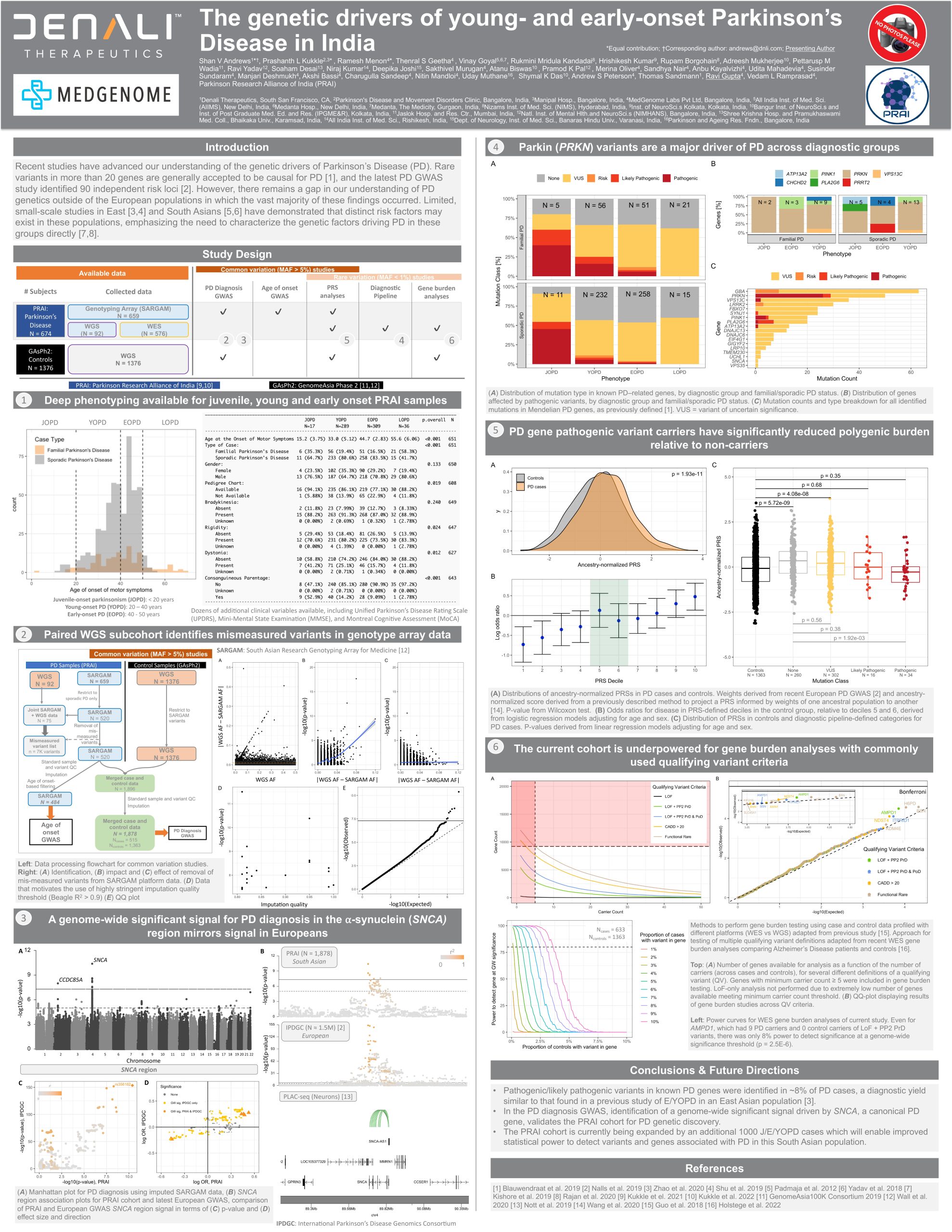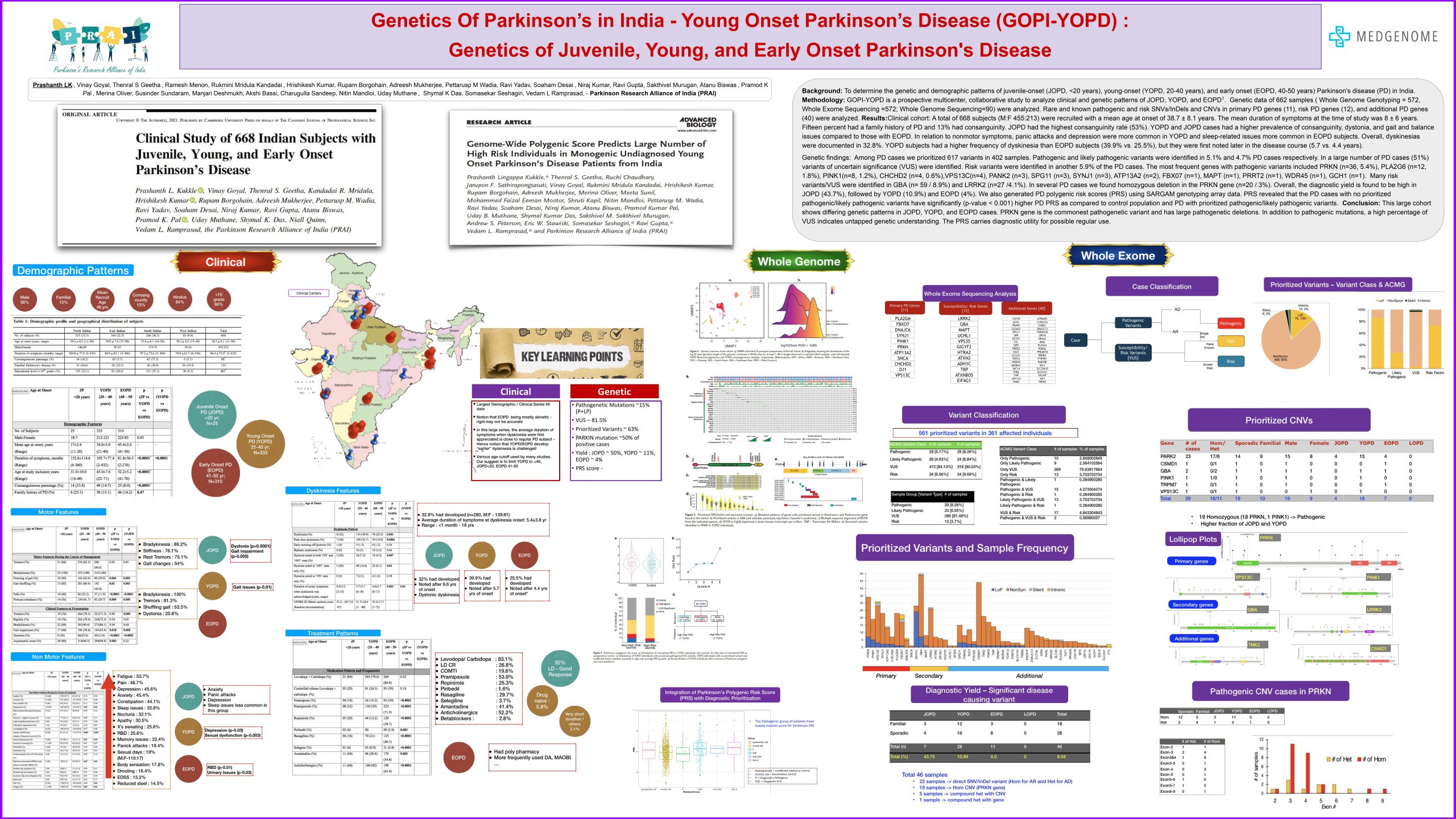The Genetic Drivers of Young and Early Onset Parkinson’s Disease in India
This paper was presented as a part of Late breaking abstract at the Asia Oceanic Parkinson’s and Movement Disorders Congress (AOPMC), held at Kolkata, India. March 16-19, 2023. The paper address the current findings of genetics of Young Onset Parkinson Disease (YOPD) from Indian cohort.
(LBA-4)
Authors : Shan V Andrews1*†, Prashanth L Kukkle2,3* , Ramesh Menon4*, Thenral S Geetha4 , Vinay Goyal5,6,7, Rukmini Mridula Kandadai8, Hrishikesh Kumar9, Rupam Borgohain8, Adreesh Mukherjee10, Pettarusp M Wadia11, Ravi Yadav12, Soaham Desai13, Niraj Kumar14, Deepika Joshi15, Sakthivel Murugan4, Atanu Biswas10 , Pramod K Pal12 , Merina Oliver4, Sandhya Nair4, Anbu Kayalvizhi4, Udita Mahadevia4, Susinder Sundaram4, Manjari Deshmukh4, Akshi Bassi4, Charugulla Sandeep4, Nitin Mandloi4, Uday Muthane16, Shymal K Das10, Andrew S Peterson4, Thomas Sandmann1, Ravi Gupta4, Vedam L Ramprasad4, Parkinson Research Alliance of India (PRAI)
1Denali Therapeutics, South San Francisco, CA, 2Parkinson’s Disease and Movement Disorders Clinic, Bangalore, India, 3Manipal Hosp., Bangalore, India, 4MedGenome Labs Pvt Ltd, Bangalore, India, 5All India Inst. of Med. Sci.
(AIIMS), New Delhi, India, 6Medanta Hosp., New Delhi, India, 7Medanta, The Medicity, Gurgaon, India, 8Nizams Inst. of Med. Sci. (NIMS), Hyderabad, India, 9Inst. of NeuroSci.s Kolkata, Kolkata, India, 10Bangur Inst. of NeuroSci.s and Inst. of Post Graduate Med. Ed. and Res. (IPGME&R), Kolkata, India, 11Jaslok Hosp. and Res. Ctr., Mumbai, India, 12Natl. Inst. of Mental Hlth.and NeuroSci.s (NIMHANS), Bangalore, India, 13Shree Krishna Hosp. and Pramukhaswami Med. Coll., Bhaikaka Univ., Karamsad, India, 14All India Inst. of Med. Sci., Rishikesh, India, 15Dept. of Neurology, Inst. of Med. Sci., Banaras Hindu Univ., Varanasi, India, 16Parkinson and Ageing Res. Fndn., Bangalore, India




